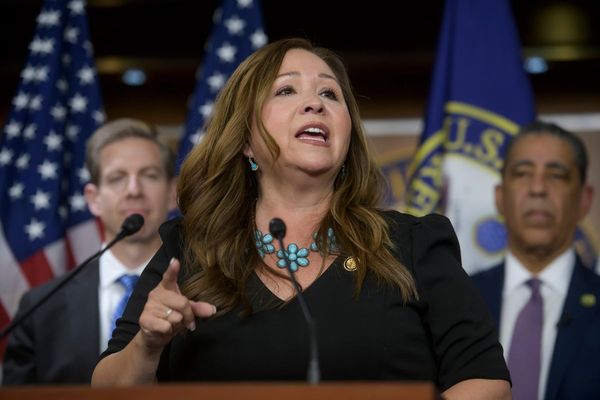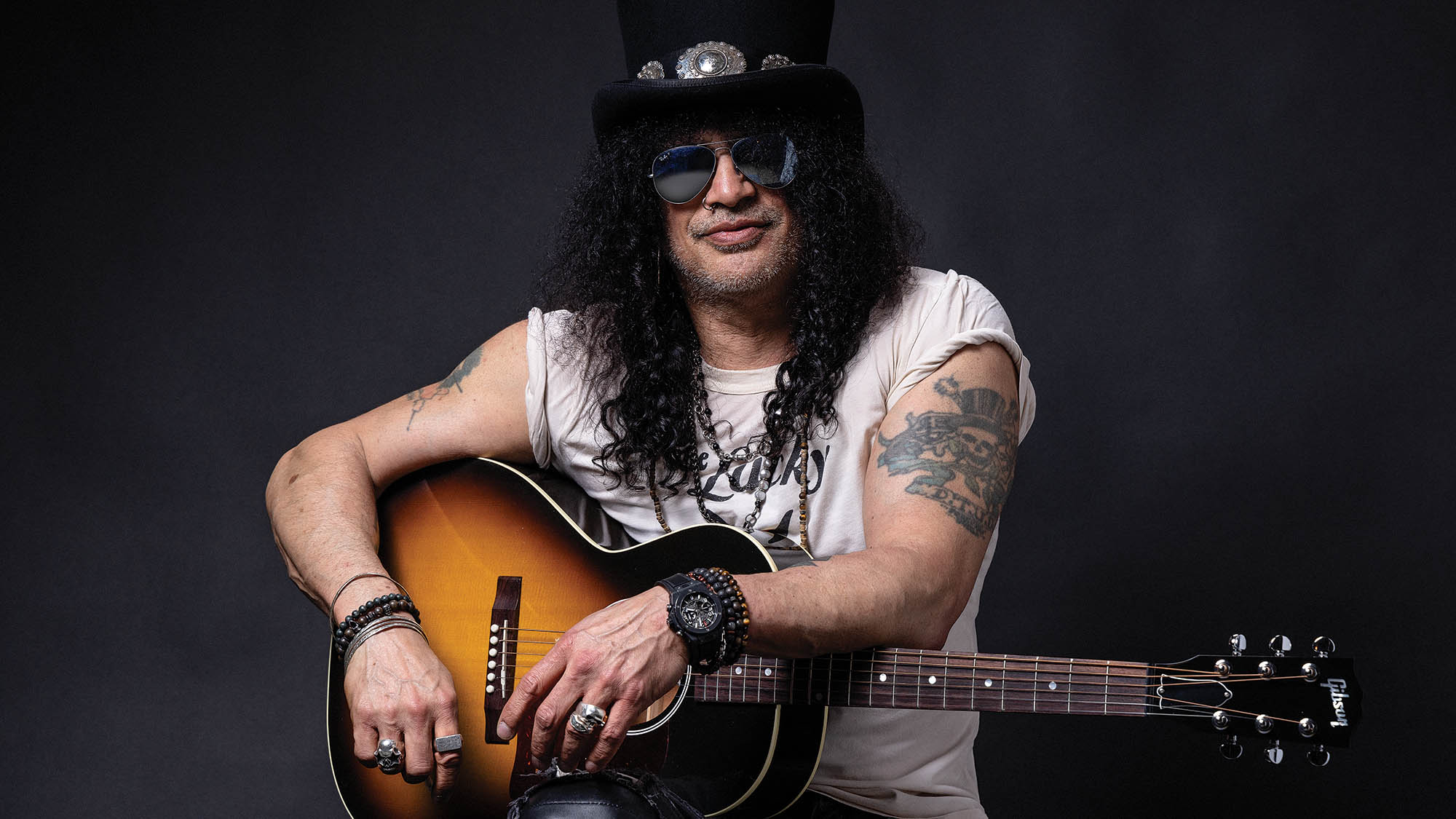
Back in November 2023, Slash had just completed six months of touring with Guns N’ Roses, a jaunt that took the band everywhere from Budapest and Tel Aviv to Abu Dhabi and Oslo, and then wrapped with yet another run of stadium dates across the U.S.
Heading into the holidays, the 58-year-old guitarist was staring down an eight-week break before returning to Europe for a long headlining run with his other band, Slash Featuring Myles Kennedy & the Conspirators. And so, he did what most of us would do at that moment: take a breather and enjoy some well-earned rest and relaxation.
We’re kidding, of course. What Slash actually did was head right back into the studio, this time to cut a solo album that paid tribute to the blues artists that inspired his own musical development and guitar style. And he did it with the help of some of his famous and extremely talented musician friends, among them Iggy Pop, Gary Clark Jr., ZZ Top’s Billy Gibbons and the Black Crowes’ Chris Robinson.
The result is the recently released Orgy of the Damned, a star-studded affair that sees the guitarist reinterpret a host of blues and r&b classics, from Howlin’ Wolf’s Killing Floor (with AC/DC’s Brian Johnson and Aerosmith’s Steven Tyler), Willie Dixon’s Hoochie Coochie Man (with Gibbons) and Stevie Wonder’s Living for the City (with Tash Neal), to Robert Johnson’s Crossroads (with Gary Clark Jr.), Fleetwood Mac’s Oh Well (with Chris Stapleton) and many other iconic tunes.
Slash has long flirted with the idea of doing a blues covers album (he also led a short-lived covers band, Slash’s Blues Ball, that he gigged with in the ’90s following his initial departure from Guns N’ Roses), but it took until this decidedly not-very-un-busy moment in his life for it to finally happen. Why now?
“I think it was building up in the back of my mind for so long that it finally pushed its way to the fore,” he tells Guitar World nonchalantly. As for carving out time in his schedule to get it done, he merely shrugs. “I had the short break, and I knew it wouldn’t take long to do and that it would be fun to do. So it was, ‘Let’s make the record…’ ”
No time like the present – even if it’s a busy one. “Well, I like playing and I like working, for want of a better word,” Slash says. “I’m really not good at just sort of sitting around and spinning my wheels. I can do it for a few hours, or a day, but I can’t go weeks like that.” He laughs. “My mind would go crazy.”
Fortunately for Slash and his mind, he won’t be spinning his wheels any time soon. Rather, he’s spending the summer not just on tour, but leading his very own branded music extravaganza – the S.E.R.P.E.N.T. Festival.
An anagram for Solidarity, Engagement, Restore, Peace, Equality N’ Tolerance, the new outing sees Slash and his band – former Blues Ball members bassist Johnny Griparic and keyboardist Teddy “Zig Zag” Andreadis, along with drummer Michael Jerome and singer and guitarist Tash Neal – headlining a nightly celebration of the blues that features, depending on the date, a lineup of performers that includes the Warren Haynes Band, Keb’ Mo’, Larkin Poe, Christone “Kingfish” Ingram, Samantha Fish, ZZ Ward, Robert Randolph, Eric Gales and Jackie Venson.
The result is, well, an actual blues ball, with each show presenting a range of acts that reflect the breadth and scope of the form, and who expertly telegraph the myriad ways the music is interpreted by contemporary artists and absorbed by contemporary audiences.
“It’s going to be a whole day of really cool music,” Slash says. “And maybe reminiscent of a period gone by that used to happen a lot more often, where people would go out in the summertime and have these outdoor amphitheater gigs with a bunch of different bands and players would just jam. And you know, I’ve sat in with guys doing blues songs here and there, but I haven’t done full sets like this, and in a festival-like setting, since the ’90s. So I’m really excited.”
I’ve sat in with guys doing blues songs here and there, but I haven’t done full sets like this
He believes audiences will be similarly enthused. “I just want people to have a really great time,” he says, “and go home feeling satisfied after having food and drinks and hanging out with people and listening to great music. That’s my hope. So we put it together to have a bunch of great players just playing from the heart all day and giving it their best.”
Prior to the tour’s kickoff, Slash sat down with Guitar World to discuss the S.E.R.P.E.N.T. Festival, making Orgy of the Damned and some of the unusual (well, for him) gear he has been using as of late. He also dove into his love for and history with the blues, how he approaches playing the music, and why he believes this traditional style still has resonance in the modern world.
“One of the great things about blues is the stories that it tells, especially for people who are struggling,” Slash says. “And it also offers a reprieve for the people who are performing it, where they can play something and just feel better after all the fucking grind or whatever it is that they’ve been going through.
“So to me, blues concerts and blues festivals are really about people all getting together to enjoy the moment, where you don’t have to worry about the pressures of life for a little while. And I think that’s really what this festival is – a celebration of a moment to sort of let it all go and just have a good time.”
How did the S.E.R.P.E.N.T. Festival come together?
“After I finished up the [Orgy of the Damned] record, the next thing is always figuring out a tour. And my manager told me that a promoter that he was talking to was interested in doing a blues festival and putting something together like that with me. And I just thought it was a great idea. So I jumped at it and started putting together some suggestions for blues artists I thought would be great to have on the bill.”
The artists involved represent so many different expressions of the blues.
“All the players are really, really cool. And they’re all people that, with the exception of maybe Eric Gales and Warren Haynes, are relatively new to me.
“I mean, some people have been around – like, Kingfish has been around a lot longer than I realized, but because of social media, all of a sudden I became very aware of him, more than I had through regular word of mouth. And some of them are fairly young, new artists, which I think is very cool to have. But overall it’s a really nice mix.”
I thought it’d be great if we could help make this into something a bit more communal... more about bringing people together as opposed to driving everybody apart
A particularly cool aspect of the tour is that you’ve partnered with various charities – the Equal Justice Initiative, Know Your Rights Camp, the Greenlining Institute, War Child – and will be supporting these organizations with proceeds from ticket sales.
“I thought it’d be great if we could help make this into something a bit more communal, and make the gigs more inclusive and more about bringing people together as opposed to driving everybody apart, which has been sort of really what this country has been doing for the last five years, you know? Like, we’ve been seriously focusing on division.
“So we started looking into some different charities that would be in line with important causes, like racial injustice and mental health – organizations that help people on the fringes, who are kept on the fringes because of certain discriminations and things like that. All around, it just seemed like another really good way to bring people together, in addition to the music.”
It’s a way to address personal and societal struggle, which are themes inherent to blues music.
“Absolutely. The blues has always functioned as a release for people that are having hard times – both the people playing it and the people listening to it. And unfortunately, I think a lot of people are having a hard time these days.”
My grandmother being American was like, ‘Well, you know, all those rock guys get it from this.’ And she played me B.B. King
What was your earliest exposure to the blues?
“I think it was a little different from some other people. When I was really young, I lived in England [Slash’s father, Anthony Hudson, is British; his mother, Ola, was American], and it was all about the bands that my dad was listening to heavily, which was the Kinks and the Who and the Yardbirds and the Moody Blues and the Stones. That was, like, the big thing.
“For the first seven years of my life, I listened to that shit day in and day out, every minute of the day. And it was great. But when I moved to the States, all of a sudden it was all these different artists. It was Led Zeppelin and Joe Cocker and the Beatles… obviously the Beatles were the Beatles, but they were bigger in America at that time. It wasn’t such a big deal in England. And my grandmother being American was like, ‘Well, you know, all those rock guys get it from this.’ And she played me B.B. King.”
That took you back to the source, so to speak.
“Well, on my mom’s side of the family, my grandmother and my cousins all listened to a lot of blues and r&b and soul music. A lot of funk, too. And I had two cousins, Wayne and Edward, who were a fucking monster rhythm section, bass and drums. They never took lessons, but they could pick up an instrument, hear a song and play it.
“So I began to be exposed to all that once I moved to the States – a lot of Muddy Waters and John Lee Hooker and Little Walter and all this cool stuff. But I was just a little kid – I didn’t really know what it all was, I just liked it. And so later on, when I finally did pick up the guitar, I started learning stuff by the rock guys that I had rediscovered for myself out of my parents’ collection.
It was Cream and Zeppelin and Rory Gallagher and Eric Clapton, and it was that stuff, maybe Clapton, that took me back to B.B. King again
“It was Cream and Zeppelin and Rory Gallagher and Eric Clapton, and it was that stuff, maybe Clapton, that took me back to B.B. King again. And I remembered B.B. King from my grandmother. So it was a sort of full-circle moment of realization. Because my grandmother had told me, and I didn’t really get it at the time – I mean, I got it, but it wasn’t really important to me [Laughs] – that I was listening to all these British artists, and they were all heavily influenced by these Black artists from America. And she wanted to make sure credit was given where credit was due.”
She had a good point.
“She was right. And all things considered, my favorite British guitar players are amazing, but they all pale in comparison to the original guys, because that was their own personal technique, from its origin, and everybody after that was just picking up on it and taking it somewhere else.
“But those early blues guitar players from the ’50s and ’60s – and, of course, it goes further back than that – there was a thing there that was just raw and amazing and unique, you know?”
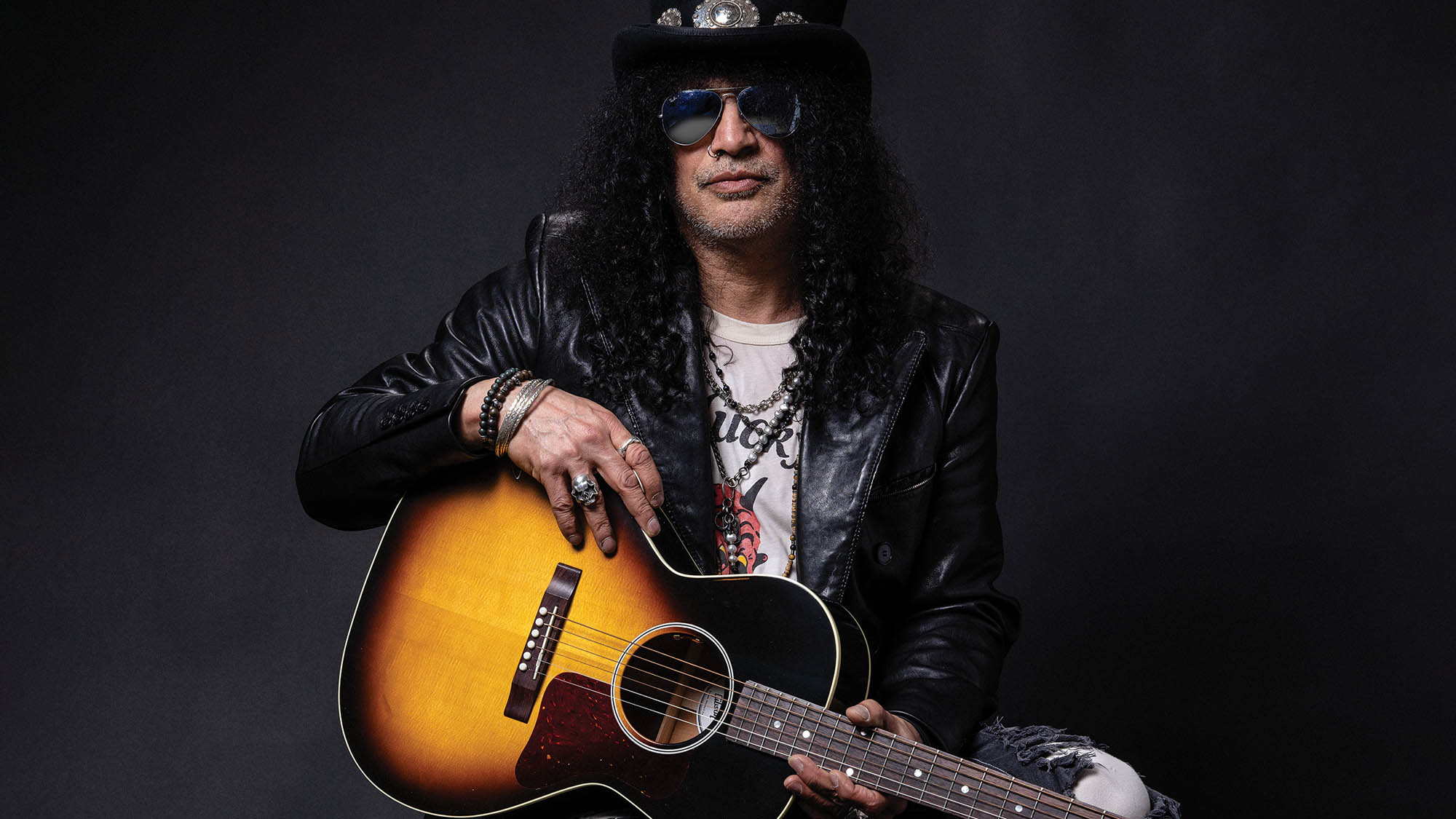
When it came to recording Orgy of the Damned, in addition to stepping outside your usual musical zone, you also tried out some different gear. We can see you playing a Gibson ES-335 in the video for Killing Floor, and you’ve talked about using a Fender Strat on Oh Well and a Telecaster on Living for the City. Will you be bringing any of those guitars on the road for the S.E.R.P.E.N.T. Festival?
“The 335 is something I’ve always dug, but it just never fit with my thing. I used one with Velvet Revolver for a minute, but it just never seemed right. But interestingly, I had gotten this really pretty 1963 ES-335 [this guitar was recently recreated by the Gibson Custom Shop as the Slash 1963 ES-335 Collector’s Edition] a few months before I had the idea to do this record.
I have a cool old Firebird that sounds really nice that I might bring out, and my ’58 replica Explorer... And there will be Les Pauls
“And then when I had decided I was going to do the record, I was like, 'Oh, cool – I can use this guitar!' So it became a part of the record, and I’m definitely going to be using it on the tour. I also have a really cool old [Gibson] Firebird that sounds really nice that I might bring out, and my ’58 replica [Gibson] Explorer, which is a great-sounding guitar that I’m definitely going to bring out. And there will be Les Pauls.
“I don’t think I’m going to bring any ’58s or ’59s, but I’ll use the Custom Shop equivalents. As far as Teles and Strats go, it was great to use them in the studio, but I doubt I’ll bring them on the road. I can make those sounds pretty much with any of my Gibsons, at least close enough to pull it off.”
You also used some smaller combo amps on the record. Will any of those make it to the stage?
“Funny enough, I only used one combo on the record – a Magnatone M-80, which started a whole big thing with me. I got that Magnatone a few years ago – I think it was [Guns N’ Roses guitarist] Richard Fortus that turned me onto it. But I’d been hearing about it from other people, too, like Billy Gibbons.
“I’ve always been such a Marshall guy that I’ll listen to tons of different amps, but nothing really measures up for me. So I’m always sort of like, ‘Yeah, yeah, whatever…’ But I got this Magnatone, and when I went into pre-production for this record, I said, ‘Well, I’m gonna use some old combos instead of just my regular Marshall setup.’ Which is not to say that I couldn’t have done the record with a Jubilee, but there’s a certain Marshall sound that I was trying to get away from.”
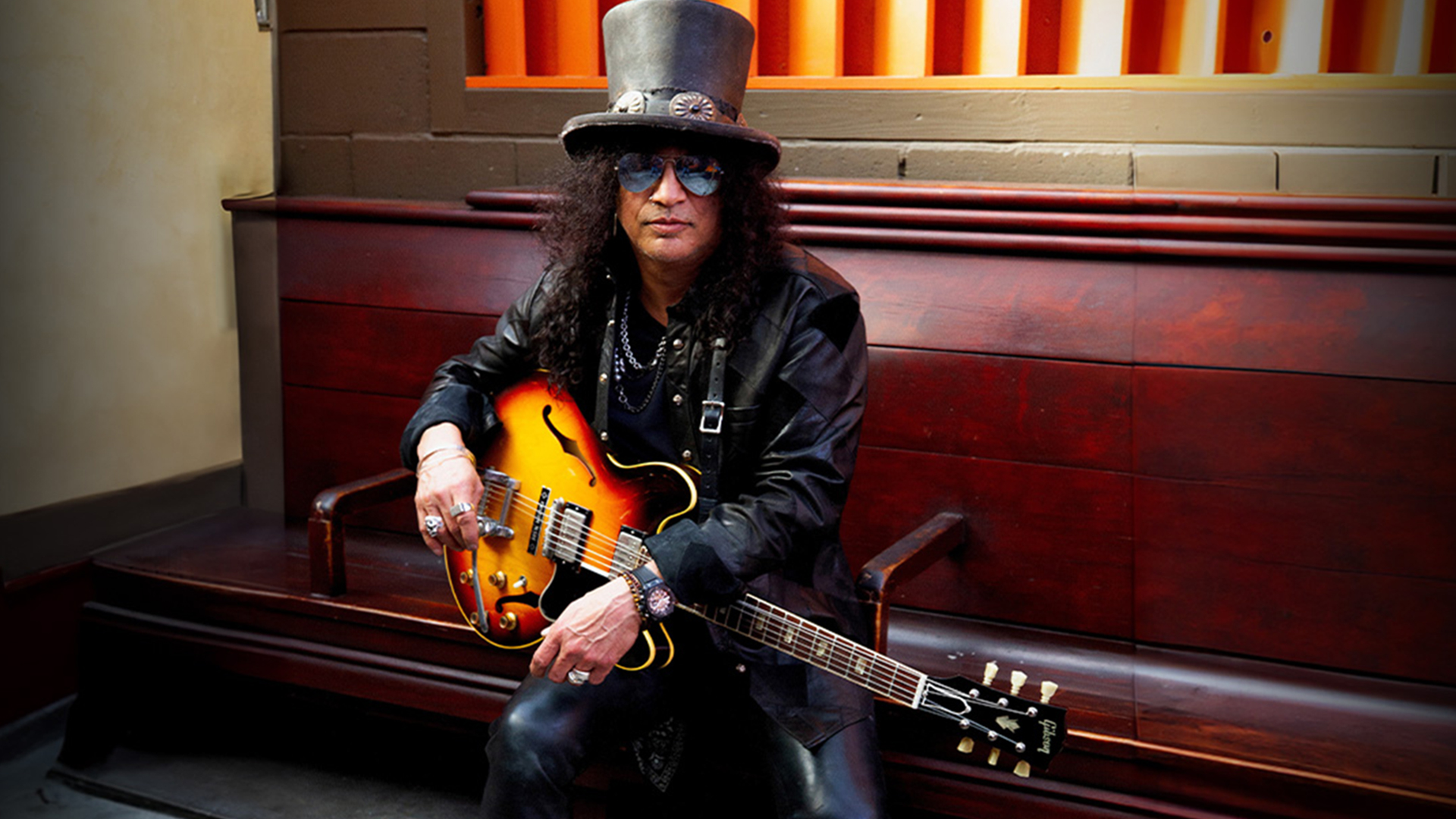
“But what I did was I took a 50-watt Marshall in, and I had a Dumble Deluxe combo that Dumble built for me – I think it was the last amp that [Alexander “Howard”] Dumble made before he passed away. And then I had an old Vox, some old ’50s Fender Deluxes… I took all this stuff in to the studio, and I would get set up and go through these different amps, and I would end up with that Magnatone every fucking time. [Laughs]
“I did all the pre-production with the Magnatone, and then I used it for the whole recording session. I went on to design a 100-watt Magnatone [the Slash Signature SL-100], which I’ve been using on the road.
“But the Magnatone I’m using right now is a little 50-watt M-80. There’s two versions – the combo, and then a head with a 2x12 cabinet. I’m probably going to take the head with the 2x12 cabinet out on the tour.”
As far as your setlist for the S.E.R.P.E.N.T. Festival goes, I imagine much of it will consist of the covers we hear on Orgy of the Damned. A lot of those are also songs you played with Slash’s Blues Ball in the ’90s. Clearly, you have a lot of history with these songs.
“Yeah. And they’re songs that had a big influence on me prior to Blues Ball. We picked the songs because they meant something to me then, and there’s some others that are just great blues songs. But what happened was, the Blues Ball was something that was just a fun, fuck-around kind of thing.
“We did a lot of gigs and it was a blast, but it wasn’t something I took really seriously. It wasn’t going to be my next sort of career move. I ended up doing [Slash’s] Snakepit again after that, then Velvet Revolver and so on. But I had always wanted to record the blues stuff. And so when it finally came back around 30 years later that we were going to record this material, Ted [Andreadis] managed to pull out some of these old Blues Ball set lists.
“And I was like, ‘Yeah, this song, this song, this song.’ And then I had a couple that we didn’t do in Blues Ball, like Killing Floor, but it’s always been one of my favorite guitar riffs of all time. So we got some songs from the old set lists and then a couple different songs that were newer for us and put it all together.”
Orgy of the Damned provides a great cross-section of blues classics. Can you point to additional blues songs that you would consider essential listening?
“I was talking just recently with someone about Spoonful [written by Willie Dixon], which is something that was a big influence on me and that I was actually considering doing for the record, but Killing Floor won out.
“And then yesterday I was listening to a song, I Was Blind, by B.B. King, which is maybe less known compared to some of his other ones but that I love. [Jimmy Reed’s] Bright Lights, Big City is another influential one that we might put into the set for the tour.
“A more obvious one for guitar players would be [Willie Dixon’s] I Ain’t Superstitious – there’s so many different versions of that song, even prior to Jeff Beck doing it, which are really, really cool. I’ve always dug that song. Mojo Hand is something that’s really cool from Lightnin’ Hopkins and is another one I think we’ll probably do on the tour.
“We were talking about Rory Gallagher earlier – Cradle Rock is a good one there. And along those lines, Gary Moore’s Still Got the Blues. And a song that’s not necessarily a blues song but that we might do on the tour is Use Me, by Bill Withers. I’ll probably put it in the set because I just love that riff. So there’s just a lot of cool stuff. I could go on and on, you know?”
There’s still so much guitar information and inspiration to be gleaned from the classic artists. But do you listen to any of the newer, for lack of a better term, ‘Instagram famous’ technical players?
“You know, there’s a lot of really great players out there that I’m aware of in that sort of world, but I don’t necessarily know their names. They’re really amazing and doing all kinds of crazy shit, and a lot of it is interesting or entertaining to watch for a minute. It doesn’t necessarily stick with you, but it’s bitchin’. [Laughs]
“You’re like, ‘Whoa, that’s pretty tricky!’ For me, I think it’s when somebody is playing in such a way where there is a mix between some new-school technical stuff and some old-school styling, that’s what catches my attention. Techniques are cool, but they’re only great if they fit into the music in an emotional context, or if it’s a fluid part of a melodic run, like it just came naturally.”
Can you give an example?
“A great example, and I can’t remember the name of the song, but there’s a B.B. King song where he plays a lick and then he throws in a diminished scale. I mean, I know what that is, right? [Laughs] I recognize it, but it’s part of the solo so you don’t really think about it in technical terms; you just hear melodically that there’s something really cool going on.
“And really, he’s just playing a regular pentatonic thing, with three notes or four notes of a diminished scale added in. But it’s right between keys, and it’s so perfect. I don’t hear guys doing that so much. It always seems so planned out and articulated.
“Whereas sometimes the natural sort of passing tones that you do as you’re playing produce these really interesting things, when you’re not thinking about what scale it is or what technique you’re using. I think I tend to like that more.”
When you’re playing blues, do you think about the history behind it? Or, conversely, do you consider how to present it in a modern context?
“Actually, when it comes down to it, it’s neither of those for me. It’s just a fun thing to do. I did pick these songs because I innately felt a connection to them on a deeper level than just, ‘Oh, that’s a cool song,’ but it was also really just something that I wanted to do for fun. So I tried to have a good time with it and not take it too seriously.
“That was one of the reasons I brought all the different singers in for the record, as opposed to having Ted and Tash just sing, which is what we’ll do onstage. Because I didn’t want people to think it was a serious new band record that I was doing. It was just about doing something that would be fun to listen to, and that would maybe turn some young people on to some old songs that they might not have heard before.”
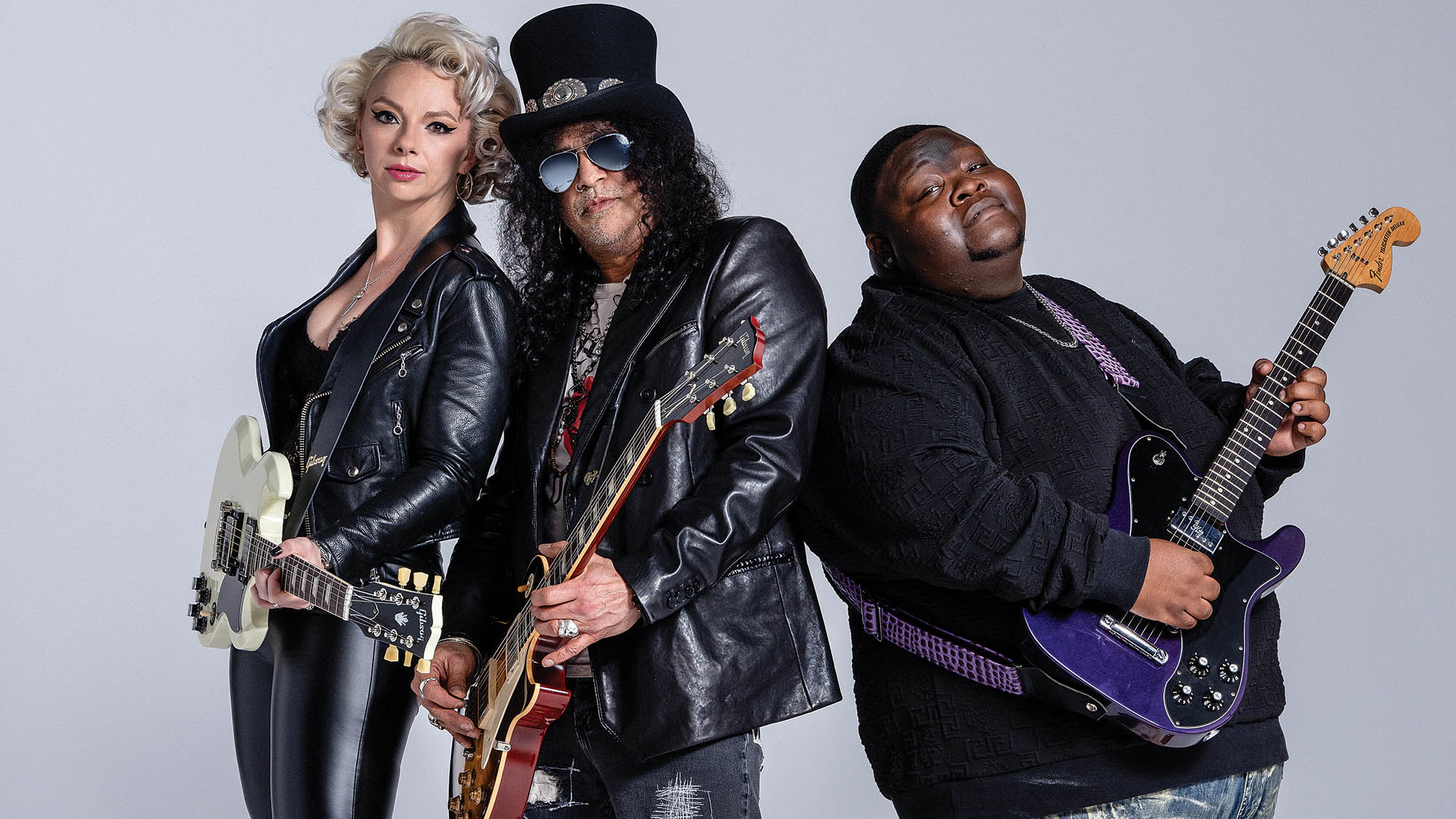
I imagine you have similar aims with the S.E.R.P.E.N.T. Festival.
“With the festival, I have no idea what it’s gonna be like, but I have a feeling I’m going to really get off on it. There’s going to be a lot of jamming and a lot of discovery and a lot of learning for me as a player. I probably want to do it annually, or semi-annually, or something like that.
“And going forward, I would probably want to put out some bluesy records outside of Conspirators and Guns N’ Roses, things that are more oriented and focused in that way, where I can play that stuff and write that stuff for my own personal satisfaction.”
Kingfish plays really great, old-school blues. But he does it in his own way, and that alone makes it fresh
That sounds like a fun prospect.
“Yeah. And so going back to what you were asking before, I don’t know that I would necessarily think about, ‘Okay, well, here’s how to introduce blues to the modern era…’ I would definitely be very cognizant of the old sounds and a lot of old tones and all that kind of stuff, because I want to preserve it for me, feel-wise.
“But I think that when you put your own personality on it, and you live in the modern era, if you’re not trying to emulate being something from way back when it just takes on its own sort of fresh tone anyway. Kingfish plays really great, old-school blues. But he does it in his own way, and that alone makes it fresh. And that goes for anybody doing it; play what you love, and make it your own.”
- Orgy of the Damned is out now via Gibson Records.



